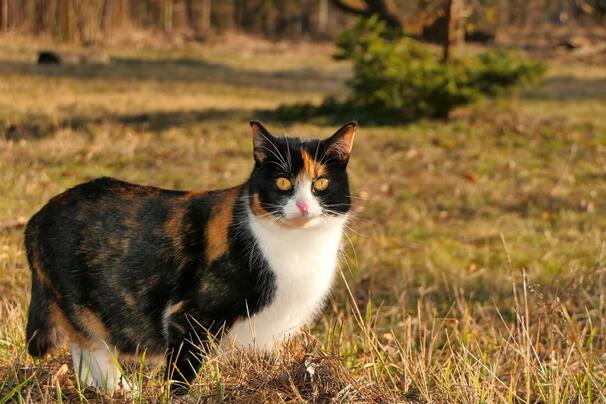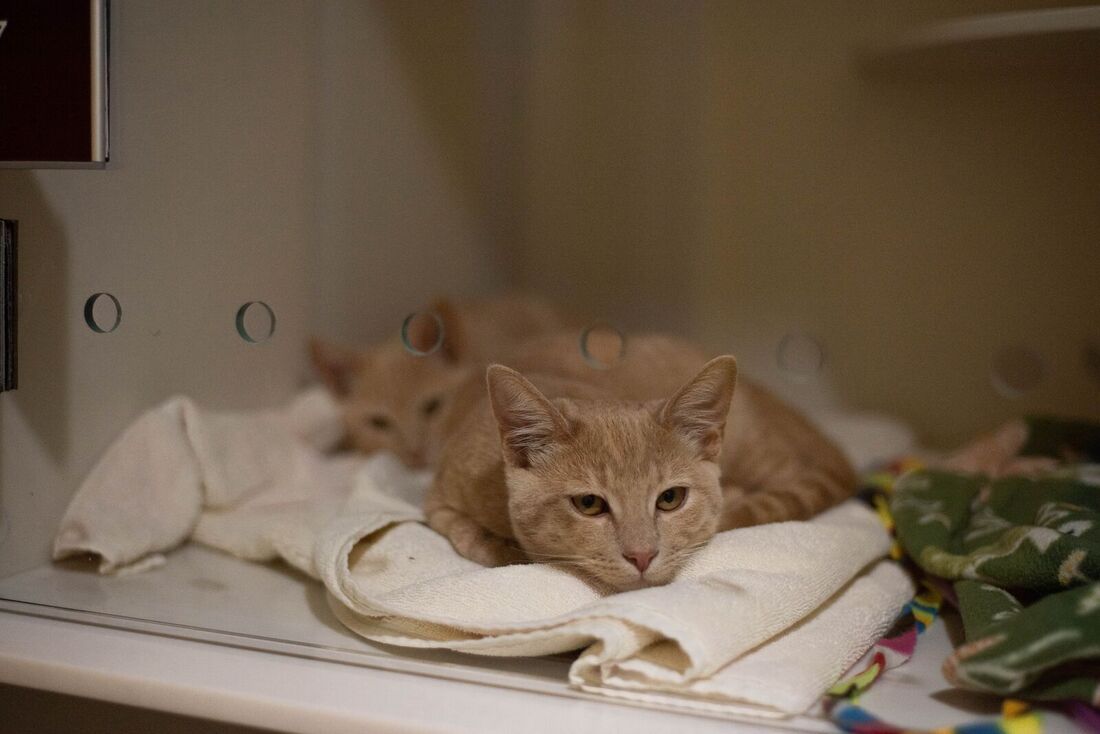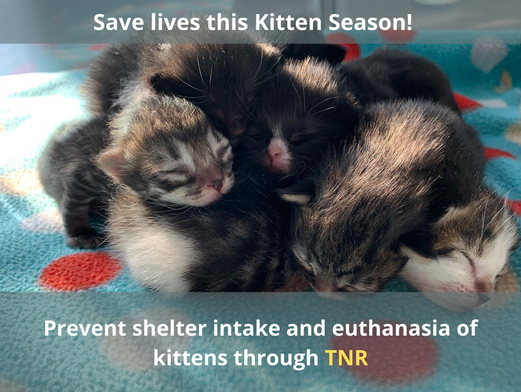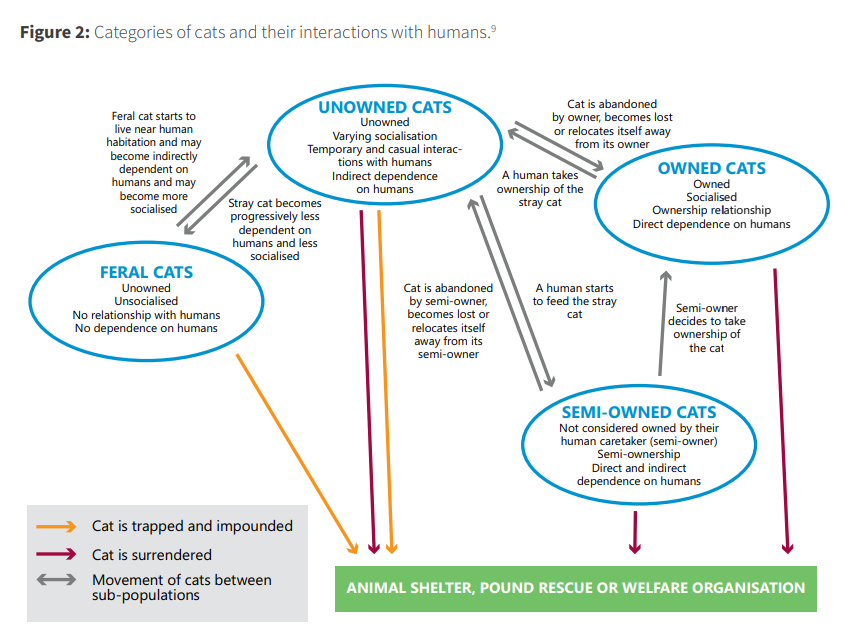|
The national Australian government, along with many state governments, have been pursuing large-scale culling of unowned outdoor cats for decades. The goal of eradicating feral and stray cats from large portions of the landscape, even whole islands, is to protect the native wildlife, which many Australians believe are being threatened to extinction by cat predation. Despite heavy evidence that cat predation has little effect on overall prey animal populations, anti-cat hysteria seems to be the norm throughout the country.
Alley Cat Rescue has been following the persecution of cats in Australia with particular concern. That is why we were surprised and thrilled to read a recent article on the ABC Australia website that announced, “Stray cats would be desexed and released to reduce the number of animals euthanased under a proposal being considered by the New South Wales government.” This is welcome progress from Australia’s fifth largest, and arguably best internationally known, state. According to the article, the Centre for International Economics for the NSW Office of Local Government is recommending funding a sterilization program for an initial period of five years. Free spay/neuter programs have actually already been started in some areas of NSW and, per the article, “an RSPCA trial in Greenacre in Sydney's south-west [has reduced] the number of kittens coming into the shelter from the area by a third in its first year.” According to Professor emeritus of the University of Queensland’s School of Veterinary Science, Dr. Jacquie Rand, this could have a huge positive impact on outdoor cat populations. Dr. Rand, who is heading a research project on community cat programs, told ABC News Australia that said the cost of desexing and microchipping — about $300 plus registration fees — was a barrier to taking ownership of cats.” She therefore believes that concerned, compassionate citizens will be empowered to TNR the community cats they already feed and otherwise manage, as well as enable them to remove more friendly strays and kittens from colonies through adoption and fostering. Although many Australians argue that returning cats outdoors, even after they are sterilized, still puts native species in immediate danger of being hunted, Gemma Ma, manager of the RSPCA's Keeping Cats Safe at Home program, presented the undeniable counter-argument to ABC Radio Sydney that “the current approach of trapping and euthanasing strays had failed to curb the numbers living on the street.” We hope to see more support for outdoor cats coming out of NSW in the near future. We are also hopeful that community cat programs there will influence other places within Australia, and perhaps other nations, to respect cats’ lives as much as they do those of wild animals. Reference: Bolger, Rosemary. “NSW Considers Expanding Free Desexing for Stray Cats to Reduce Euthanasia Rates.” ABC News, 19 Jan. 2023, www.abc.net.au/news/2023-01-19/nsw-considers-expanding-desexing-stray-cats-reduce-euthanasia/101867888.
15 Comments
Miami-Dade County Animal Services in Florida has a program that makes it easy for locals to either bring in community cats for free surgery and vaccinations, or report strays so that the county can do the entire TNR process themselves – take a look at their simple yet comprehensive report form.
More municipal animal departments should offer free TNR. It is good for the cats and the community. Miami-Dade has even gone a step further to manage their stray and feral cats through TNR; their Tip the Trapper Initiative offers county residents $15 per outdoor cat brought in for sterilization and vaccinations! The $15 payment is contingent upon the trapper’s adherence to essential guidelines, such as “all cats must be treated humanely, with dignity and respect,” and “Once services have been performed and the cats are medically cleared for release, the trapper must return the cats to the location where the cats were trapped. The modest cash reward may sway someone who has been ignoring a group of nearby outdoor cats because they think trapping them and bringing them to the county clinic is a hassle, or perhaps someone who has noticed the cats but never considered taking action. The Tip the Trapper Initiative kicked off in 2019, and that year more than 12,000 cats were TNR’d through animal services. Their TNR program continues to be highly impactful; they reported 242 cats TNR’d during the week of July 25th alone.  Photo by Krzysztof Niewolny on Unsplash The government-funded Polish Academy of Sciences has classified domestic cats (Felis catus) as an “invasive alien species.” This designation is given to species that are not native to a region’s ecosystem, and cause damage to that ecosystem. The institute has said that the label is purely scientific and not a call to action against cats. They say that the number of birds and other small native animals cats kill per year qualifies them to be listed this way in their national database. In response to public concern, the institute put out a statement saying it is “opposed to any cruelty towards animals.” There is no reason to doubt the Academy’s sincerity, but it is fair to question their judgment. Given the deadly persecution that cats face in places such as Australia and, sadly, Alaska and Hawaii in the name of environmental protection, attaching such stigmatic terminology to cats in Europe could give rise to culls there as well. Beyond the Academy’s moral responsibility to avoid putting cat lives in danger, the classification is based on shaky science. There simply is not sufficient information available to determine if cat predation has any detrimental effects on the overall populations of prey animals, including birds; yet environmental and bird groups, like the American Bird Conservancy, continue to push for the eradication of feral cats, claiming cats are in fact contributing to the decline of bird species and other wildlife. The few studies that have been conducted on cat predation are from remote islands with closed ecosystems, where local bird populations have not evolved with predators. Because cat predation on continents is very different from island environments, it is inaccurate and inappropriate to extrapolate data from these particular studies to predict predation on continents. Like any predator, cats tend to feed on the young or old and those who are sick or in a weakened state because they are the easiest to catch. And the UK’s Royal Society for the Protection of Birds (RSPB) states, “It is likely that most of the birds killed by cats would have died anyway from other causes before the next breeding season, so cats are unlikely to have a major impact on populations.” Every year, many millions of birds die naturally due to starvation, disease, or other forms of predation. And most of the millions of baby birds hatched each year will die before they reach breeding age,” (RSPB, 2014). One truth that is incontestable, however, is that cats are easy scapegoats for governments and institutions that can’t or won’t address much larger environmental hazards. According to the European Environment Agency (EEA), agriculture is the primary danger to nature in Europe. Per the EEA’s website, “Pollution by pesticides used in agriculture is the main cause of the worrying decline in the number of insect-eating birds and farmland birds.” * The site also names habitat loss and damage, unsustainable forestry, hunting, and overfishing as greater threats to wildlife than “alien invasive species.” The more one looks into it, the less wise it seems to officially label cats as a danger to the natural environment in Europe. Even if there is any truth to the claim, nothing has been accomplished but to spark or fuel animosity toward cats. * https://www.eea.europa.eu/signals/signals-2021/articles/what-is-harming-europe2019s-nature Although we disagree with the claim that cat predation is a proven major factor in the decline of birds and other wildlife, we would rather no animals are killed by cats who don’t need to hunt for their food. Here are some tips we can all follow to protect wildlife from unnecessary predation: 
It is estimated that shelters are housing around 100,000 more dogs and cats than at this time last year. There are several reasons for this, including staff shortages due to Covid-19, inflation, which is making it harder for families to afford adopting a pet or keeping the pets they have, and a housing crisis. The influx of pets who were lost during the 4th of July and not claimed by their families has served to exacerbate the problem (only about 2% of lost cats at shelters are reunited with their families*). Then, of course, there is kitten season. City, county, and private shelters are bursting at the seams. This means that healthy, adoptable animals are at high risk of being euthanized. Several shelters announced ahead of July 4th that they may have to euthanize animals - something they have not needed to do in many years. Even the cats and dogs who have a space in the shelter, at least for now, often suffer emotionally and psychologically because there are not enough staff and volunteers to attend to them. In some shelters, kittens are getting only 10 - 20 minutes of playtime with a caretaker. This isn’t enough to keep a kitten feeling content or loved, and that scant human interaction can lead to unsocialized behavior in kittens, which then makes their chances of adoption less, and future relinquishment back to a shelter greater. Many shelters are trying to combat overcrowding by offering limited-time free or half-cost adoptions. Whether this will have a great enough impact on the problem for many of them remains to be seen, but if nothing else, the concurrent adoption push from such a large number of shelters is certainly raising awareness. There are a few ways that individuals like you and I can pitch in and save some lives.
There are thousands of animals at risk in shelters who need a savior. They are all entitled to full lives.
*Hurley KF and Levy JK (2022) Rethinking the Animal Shelter's Role in Free-Roaming Cat Management. Front. Vet. Sci. 9:847081. doi: 10.3389/fvets.2022.847081 6/9/2022 Study Finds High-Intensity TNR Saves More Lives and Reduces Populations Over Time More Effectively Than Culling or RemovalRead NowA ground-breaking study, published in 2019, used a simulation method to estimate the success (as defined by cat and kitten survival rates as well as decrease in overall population) of TNR in comparison with other population control methods over a 10-year period. Although many previous studies have evaluated the effectiveness of population control projects by tracking changes in population size over time, this is the first to use computer-generated modeling in order to be able to compare different population management methods on a single population of cats.
Kitten Season is upon us again, that time of year when many people will stumble upon a litter of tiny babies – in backyards, under cars, behind restaurants. What can we cat lovers do to prevent this boom in kitten population, and the suffering it causes for cats in general in shelters and on the streets? We’re talking about TNR! It may seem like a shelter is a better place for orphaned kittens than the street, but the unfortunate truth is that newborn kittens may not survive in either environment. Kittens require constant care for at least the first four weeks of their lives. They require a mother or caregiver to keep them warm because they can’t regulate their own body temperature, feed them every two hours, and stimulate them to go to the bathroom. Municipal and other large shelters do not have the resources to provide such care and are therefore compelled to euthanize young kittens. Some shelter staff reach out to local rescues, asking them to take on a litter, but rescues too have resource limitations and can only take in so many litters at a time.
The true solution for this tragic situation is to end the problem through TNR; TNR prevents community cats from creating new litters. Additionally, TNR saves the lives of the adult cats by keeping them from being impounded at shelters, which euthanize unsocialized cats because they cannot be adopted out. TNR is Plan A, but it will be a very long time before every community cat in the U.S. (and around the world) is fixed. Despite our best efforts, outdoor litters happen and that is when cat welfare advocates turn to Plan B – doing everything possible to keep young kittens out of the shelter system. A newborn’s best chance is with the mother. Not every litter found outdoors has been abandoned. In fact, the opposite is true and usually the mother cat is nearby and will return shortly. If the kittens look clean, generally healthy, and are in a safe location, leave them be and return after a couple of hours to make sure mom’s returned. Once the kittens are older and eating on their own, mama can be TNR’d and they can be brought indoors. If a litter or individual kitten has truly been abandoned, being fostered is the only way they will survive. It is tough but rewarding work and ACR has resources that can help you. Visit www.saveac at.org/feral-kittens.html for articles about how to tell if kittens have been abandoned and how to care for them. Call to Action!
The Big Cat Public Safety Act would protect big cats from exploitation and improper care by prohibiting private individuals from owning them as pets. It would also prohibit public interactions with cubs such as photo ops and petting. These measures not only would protect big cats from the physical and psychological harm typically experienced by privately owned wild animals, it would also protect people in the communities where others keep such “pets.” The bill is currently up for vote in the U.S. House of Representatives. It has been reintroduced since 2020, when it was passed by the House but failed to come to a vote in the Senate. Big cats should be respected as wild animals, not bred and captured for the pleasure of individuals! Please contact your representatives and tell them to support the Big Cat Public Safety Act. You can find your representatives and their contact information at: https://www.house.gov/representatives/find-your-representative. The Australian Capital Territory (ACT) government has created a detailed action plan to “guide the management of cats—domestic and feral—in the ACT over the next decade” (ACT Cat Plan, pg. 7). The Plan is divided into 8 categories, or “strategies,” that are further divided into various “actions” to be taken by various governments, private organizations, and individuals in order to achieve each strategy. The complexity of the plan, which can be viewed at https://yoursayconversations.act.gov.au/cats-and-dogs/ACT-Cat-Plan, makes it a useful medium for obscuring the reality of its community cat-related strategies, which is that they will be killed, and on an expedited schedule. The authors of the Plan were careful to use compassionate language. The state Vision of the plan, for example, is “All cats in the ACT will be owned, wanted and cared for by responsible owners” (ACT Cat Plan, Pg. 8). That does sound like a wonderful goal, and the strategies and actions listed for the treatment of owned cats and people-friendly stray cats are focused on increasing affordable spay/neuter, promoting adoption, and educating the public about responsible pet ownership. What is not obvious from this vision statement is the implication that outdoor cats will be killed, but the implication is undeniable after scrutinization of the Plan. “Responsible owners” is defined elsewhere in the Plan as those who keep their cats indoors (and it is illegal to allow them to roam freely); this excludes colony caretakers. Since community cats cannot therefore be claimed as owned by their caretakers, nor adopted and brought indoors, they do not fit into the Plan’s Vision for all cats within the ACT. That begs the question, what happens to these outliers? The authors of the Plan do their best to dance around their answer. They make no mention of objectionable buzz words such as culling, eradication, or even euthanasia. However, this is a fragile deception. In fact, all of those practices will be implemented under the Plan. This is evident from a careful reading of Strategy 6, which is “reduce impacts of feral cats” (ACT Cat Plan, pg. 11). One of the actions of this strategy is that the Environment, Planning and Sustainable Development Directorate (EPSDD) will “Support implementation of the Australian Government Threat Abatement Plan for Predation by Feral Cats 2015…” And here are some of the directives/”Actions” of the Threat Abatement Plan:
These lethal methods are immensely cruel. The ACT Cat Plan doesn’t take direct responsibility for these actions, but it is cementing them as part of ACT policy. The fact that it does so discreetly is almost more disturbing than if it had called for the killing of unsocialized cats in a more obvious way. The Plan’s inhumane treatment of community cats is also evident in this Figure printed within its pages. We see from this figure that, under the Plan, all outdoor cats will be brought to shelters. It is a fact that unsocialized cats are euthanatized in shelters where TNR is not practiced because they are not adoptable. This applies to cats that are fearful of people for any reason, whether it be because they are actually wild or simply stressed by their new surroundings and therefore is a death sentence to all unsocialized cats and many unowned and even semi-owned cats.
The ACT Cat Plan takes pains to appear as a document of compassion for cats when in actuality, it is only concerned with the lives of certain cats. Cats that have developed without experiencing human companionship, through no fault of their own, are persecuted by the Plan. While ACR and our members certainly want indoor pet cats to be guaranteed the highest standards of comfort and safety, we care just as much about the wellbeing of community cats. That is why the ACT Cat Plan falls short of being a model for cat and animal welfare, and why we want to be sure ACT citizens read in between its lines. References Australian Government, Australian Capital Territory Government, Environment, Planning and Sustainable Development Directorate. ACT Cat Plan 2021-2031. May 2021. https://hdp-au-prod-app-act-yoursay-files.s3.ap-southeast-2.amazonaws.com/5616/2328/7803/ACT_Cat_Plan_2021-2031_FA_Access.pdf. Accessed 26 Jan 2022. Threat abatement plan for predation by feral cats, Commonwealth of Australia, 2015. https://www.awe.gov.au/sites/default/files/documents/tap-predation-feral-cats-2015.pdf. Accessed 26 Jan 2022. The days when people casually decide to have their cats declawed and vets comply are slowly reaching an end. Animal welfare groups have been at the forefront of educating the public about the true nature of declawing as a serious, painful procedure that can cause cats long lasting distress. Then major veterinary associations eventually joined the campaign. The American Association of Feline Practitioners and California Veterinary Medical Association are two important policy makers that strictly oppose declawing.
Unfortunately, despite all of our collective protestation and widely available information about declawing, state legislation to outlaw the practice has been underwhelming. Since New York set an encouraging example in 2019 by becoming the first state in the U.S. to ban declawing completely, a number of bills have been introduced in other states to do the same, but none of the bills have passed. In fact, many of those bills either died on the floor or have been in limbo for years due to inaction. This has been the outcome of bills to ban declawing in Florida, Massachusetts, Michigan, and West Virginia. Even in California, where declawing has been banned in the city of West Hollywood since 2003 and in many other cities since, a 2019 ban failed to pass. Let’s hope that the New Jersey bill that is currently going through the legislative process will succeed. On the bright side, more and more individual cities are adopting declawing bans. Outside of California, which as stated is the leader in city-level bans, Denver, St. Louis, and Austin have outlawed declawing while Madison, WI and Pittsburgh, PA are taking promising steps similar legislation. If an anti-declawing bill is in motion in your city, county, or state, tell your representative to support it. They must hear from their constituents, clearly and often, so that they know this is not a matter to be swept under the rug! The idea of a pet overpopulation crisis in North America is nothing new. In fact, it has been a constant concern of animal lovers and welfare groups for at least a century. However, unique complications of the COVID pandemic have created a perfect storm that has tilted the balance between shelter capacity and homeless animals to an even greater extreme in 2021.
In general, summer is especially difficult for shelters and rescues as it is traditionally the slowest time of the year for adoptions and, of course, it falls right in the middle of Kitten Season. Now, struggling animal care facilities are also facing staffing shortages and other COVID-related problems that have the animal welfare community in a serious predicament. A significant reason behind the staffing shortage is essential worker fatigue combined with compassion fatigue. As caregivers to living beings, shelter/rescue staff could not ride out the pandemic from home. This means that they have been working daily under a cloud of constant anxiety over their health and the health of their loved ones for about at least a year. That stress, piled atop the emotional stress that is inevitable in their field of work, has caused a lot of people to feel it necessary to leave their jobs. Not only are there too few people to organize adoptions, but the adoption process has been slowed in many cases due to a backlog the spay/neuter surgeries. The backlog is a result of spay/neuter surgeries having been postponed during the height of the pandemic, as well as a shortage of veterinarians, which can be partly attributed to the same essential worker fatigue we are seeing with shelter staff. Longer adoption processes less space available for new intakes. The challenges may seem overwhelming, but there are ways to help shelters and rescues ride this wave: Adopt if you can! Fostering makes a huge difference! Every animal safely cared for in a foster home means room for one more animal in a shelter so that two animals are effectively saved. Volunteer at your local organization Millions of kittens are born on the streets and in backyards of homes and businesses. We at Alley Cat Rescue will continue our aggressive TNR advocacy and programming to keep cats and kittens out of shelters, where they are often put to sleep even at times where overcrowding is less of a problem. ACR has a new project designed to get more municipal shelters to do or facilitate TNR…stay tuned for more information! |
Details
AuthorAlley Cat Rescue is leading in the way in promoting humane and compassionate care for ALL cats. Archives
June 2024
Categories
All
|



 RSS Feed
RSS Feed